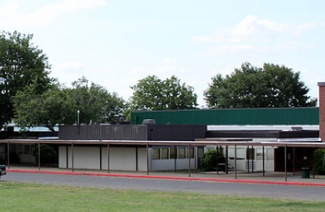
GlossopHighSchool
Glossop High School
Old Sturt Highway,Glossop,SA 5344
Glossop High School opened in 1941 and over the ensuing 67 years has become a valued part of its local community.
A partial redevelopment occurred in 1974 and the school has completed the final stages of a major upgrade project that was initially approved by Government in 1993 and began in 1997.
A new Senior Campus was completed mid 1998. This campus is for Year 11 and 12 students and has special facilities for these students.
Work on Stage 2 - to renovate the Middle School facilities - began mid 1999 and was completed mid 2000.
At the end of 1999 the School Council voted to opt into the Partnerships 21 Local School Management programme.
Glossop - What's in a name?
The settlement of Glossop, established shortly after World War I, was named after Captain John T. C. Glossop, Commander of H.M.A.S. Sydney, and hero of Australia's first naval battle. At the outbreak of World War I, the German light battle cruiser Emden which was visiting the Chinese coast, headed to sea to fight as a lone wolf raider. During the ensuing three months, the Emden created devastation among Allied shipping and by early November 1914 had sunk fifteen British Ships, and had captured and set free a further five vessels, had raided Penang (Malaya), and had shelled the oil tanks of Madras (India). On 9 November 1914, a convoy transporting Australian troops to Egypt received a signal from a radio facility at Cocos Island warning of the approach of a "strange warship". The Sydney, under Glossop's captaincy, was directed to investigate the matter.
Some 2 ? hours later, the more modern and better equipped Sydney joined battle with the Emden. Outgunning, and having suffered appalling casualties among his crew, Captain Von Muller, commander of the Emden, ordered that the warship be grounded. The Sydney subsequently took on board 182 prisoners including 65 badly wounded men. Captain Glossop requested that out of respect for the maimed and dying captives, the Allied troops refrain from cheering as the ship returned to the convoy.
Captain Glossop was subsequently interviewed in Colombo, Ceylon (now Sir Lanka), by Australian poet and war correspondent, A. B. "Banjo" Paterson, who commented: "We can hardly believe that Australia's first naval engagement could have been such a sensational win, for our navy - was never taken seriously. And now we have sunk a German ship." (A. B. "Banjo" Paterson, Happy Dispatches, 1980). Paterson found Glossop" … a typical English Sailor-man, not a bit excited by the fact that he has 'woke up to find himself famous'". Glossop himself was horrified at the mayhem of modern warfare and remarked that "I've seen my first naval action… and all I can say is, thank God we didn't start the war."
Captain John Glossop
Given this backdrop, it is thus interesting to note that Glossop High was founded at a time when Australia was again engaged in war with Germany, and that the school was the last to be constructed in South Australia during World War II.
A copy of the portrait of Captain John Glossop, the original of which hangs in the National Library of Australia, Canberra, is displayed in the main entrance at Glossop High School.
Glossop High School's origins commence with that generation of pioneers who arrived in Berri, Barmera and adjacent districts in the period surrounding World War I, and those numbers included returning soldiers settled in the region after war. Following World War I, most of the burden of soldier settlement, supposedly a Commonwealth responsibility, fell upon the states. In 1919, the South Australian Parliament passed an Act to allow for the allocation of productive land to returned soldiers in various regions of South Australia. A number of returned soldiers arrived in the Riverland to claim their allotments, some spending several years on other work before their land was available.
Life in the Riverland of this era was not for the faint hearted. Pioneering families were confronted with a range of immediate problems including lack of housing, poor transport, and a dearth of retail, medical and civic facilities, as well as an isolation which many found mentally crippling.
The pioneering settlers of Berri, Barmera and the surrounding districts who having overcome the tribulations, hardships and crushing reverses of the previous twenty years were to unite and press for access to quality secondary education for their children in the Riverland. The determination and spirit which motivated their efforts not only resulted in the birth of Glossop High, and the appointment of an extraordinarily capable group of teachers, but was to instill within the school of camaraderie and sense of achievement which was to characterise Glossop High School for many years to come.